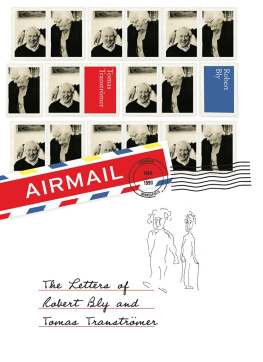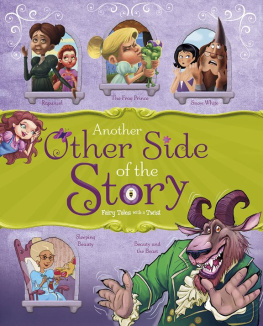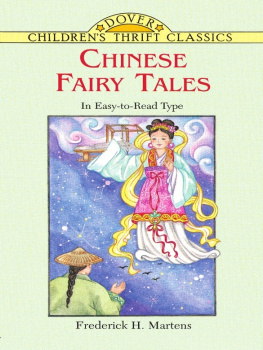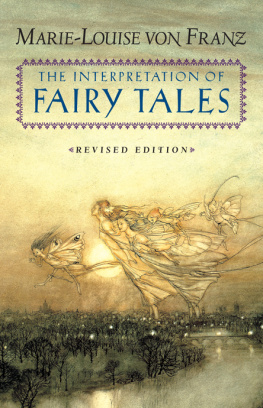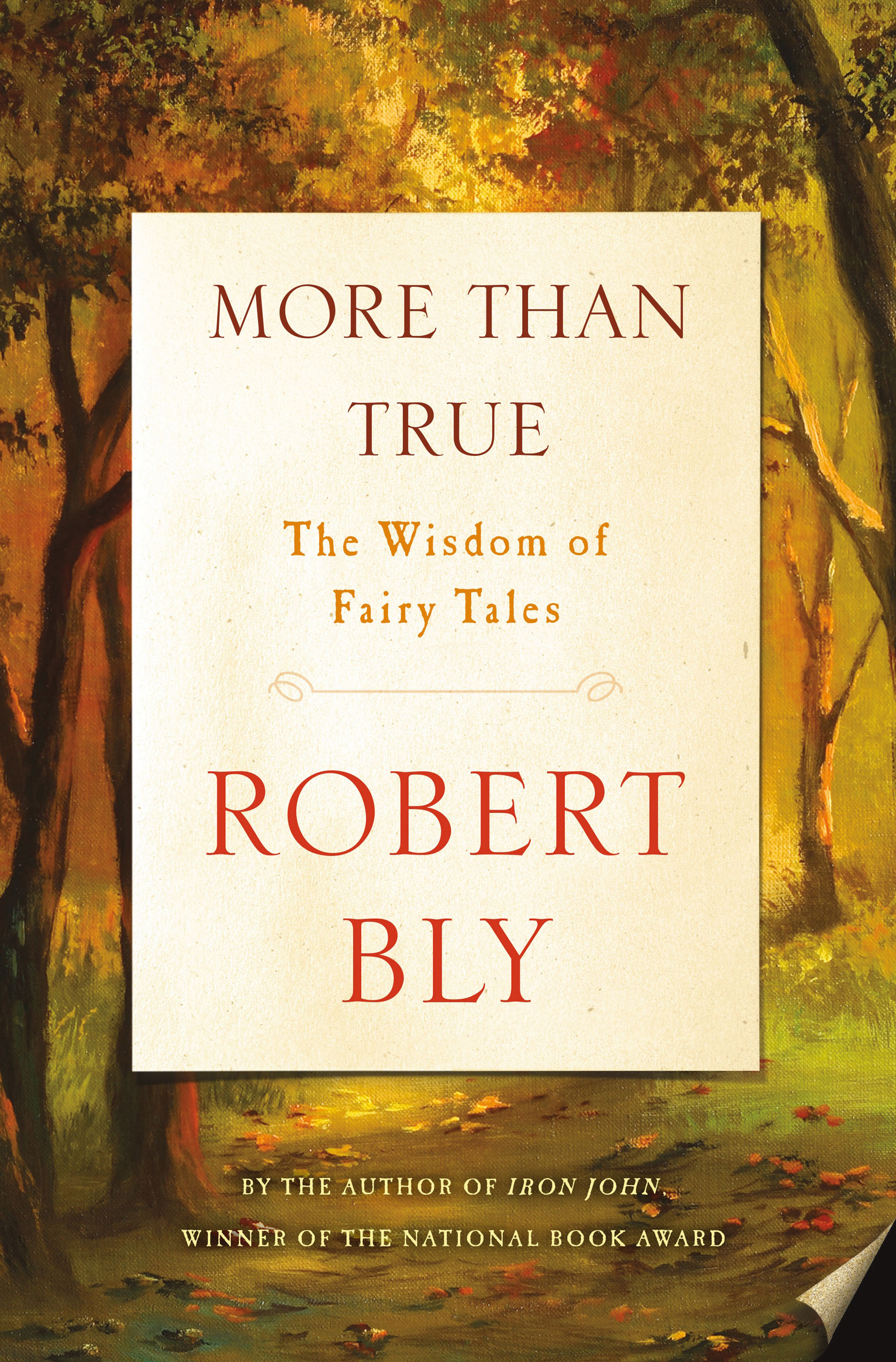Contents
Guide
Pagebreaks of the print version

The author and publisher have provided this e-book to you for your personal use only. You may not make this e-book publicly available in any way. Copyright infringement is against the law. If you believe the copy of this e-book you are reading infringes on the authors copyright, please notify the publisher at: us.macmillanusa.com/piracy.
For my beloved wife, Ruth, who taught me much about fairy stories
With deepest gratitude to the master storyteller Gioia Timpanelli, a rare being who has followed the wisdom of fairy stories all her days.
Many thanks to Libby Burton, an enthusiastic supporter of this project since she first saw it. Her welcoming of the material and her fine and careful editing have been a great blessing.
At times in the last twenty years, people have read portions of this book and given me valuable advice; I am thankful to each of them.
The wisdom of the ancients hints that the old people know more than we do: the amazing harmonies of wedding rings imagined as gold crowns; the castles where the fat King lives; the agony of the daughter who keeps near her father by asking riddles; the great hammock let down from the stars, lovers playing on its fringessuch abundance is dazzling. The human soul arrives as a frog, having regressed since the Council of Nicaea. A boy needs the help of so many others to overcome his fathers jealousy; hes subtly moved to a meadow bordering a lake, where a dragon eats sheep every night at dusk. There are stories with naked narratives that some speculate are remnants of vast festivals of narrative operas, retold in the simplest language seven hundred years later.
In Norwegian fairy tales, the storyteller kept his audience in thrall with certain possibilities of fabulous healingchanging the King to the local rich farmer, the gold services to a silver spoon, the castles to a well-built Norwegian farmhouse with towers dazzling only by comparison with the surrounding fine woods.
Other stories come down from the mystery initiations, and teachings later destroyed by forces that preferred Christianity, and were unlike ancient mass festivals in that they contained secret symbols and paid attention to stages of human growth. Some stories contain information meant for men and women on private journeys, seeking their way. And there are accounts of practices in which the community would drum around the shaman as he or she ascended, calling out from each successive world.
Sometimes fairy tales are stories of incidents, supernatural or otherwise, told and retold, in which the psyche is trying to communicate what it knows, trying to slip something past the guards of the dictator ego, embroidering it, adding elements, altering original effects, until it finally reveals some complicated truth that the fundamental imagination has wanted to see embodied for a long time.
So the psychological genius, who might have been an observant shaman or rebel priest or wise woman of the tribe, not only had to convey some important ideafor example, the stages in development of the psychebut also had the problem of making the stages clear, while creating incidents so vivid, so astounding, so colorful, so amusing, so obscene, so satisfying to the rebellious mind, that these incidents would not be forgotten. They hoped that the story might be remembered for hundreds or thousands of years and the details would still arrive fresh in the resonating soul ready to take them in.
Somehow, the old King and the golden-haired Princesses and the dangerous high-crested dragons with evil tempers have resonated for centuries in the unconscious mind. These Princesses and dragons are folded buds that, after several thousand years of development in language, have begun to unfold in the conscious mind, and this book is an attempt to help with the later opening, so that the conscious mind may receive the fragrance of the old stories, tales told centuries ago by male and female geniuses.
My wife, Ruth, and I have enjoyed reading and talking about fairy stories together for years. They are gifts that help both of us understand the craziness of our lives. When I decided to do this book, I realized that my job would be to use my intuition and write about stages of mens growth as I see them in these tales. I have no authority for my interpretation of themes in such stories, but I admire some astonishing thinkers on those matters: James Hillman, Ernest Becker, Gurdjieff, Ortega y Gasset, Kierkegaard, Yeats, and of course the two men who first turned over the closed box of male growth by standing on their heads and so putting their heads down near Hades. I mean those two old clowns, Freud and Jung. And now we also have the work of Martn Prechtel, Robert Moore, Robert Johnson, and Malidoma Som.
What has endured through human history are the stories. They are amazing trees of sound that grow inside the human memory and are fed by some longing for intimacy with others. The stories examined here are fed by the praise of the group after the last word of the story is spoken. These stories are full of information; they belong to us all.
R OBERT B LY

As the story begins, a King, who has hunted too hotly, is separated from the rest of the hunting party and soon finds himself lost in the forest, where he comes upon an old witch. He asks her whether she can help him find his way out of the forest. Oh yes, indeed I can. But theres a condition first. If you dont agree to it, you wont find your way out at all and youll starve and die here. Whats the condition then? Make my daughter your Queen. If you agree to that, I will help you.
The King agreed and followed the witch to her hut, where the daughter was waiting. She was beautifulthough he did not like her. Still, he set her up on his horse and they made their way to the palace, where they soon married.
The King and his first wife had brought to birth seven childrensix boys and a girl. They loved them all beyond telling. The mother had died, and since the King feared the new Queen might not treat them kindly, he kept the children so concealed in the forest that he himself could find them only by means of a ball of yarn a wise woman had given him. As the ball unrolled in front of him, he had only to follow the yarn to find the lonely castle where they lived. He went so often to see them that the new Queen grew suspicious. She commanded the servants to follow him and report back to her. They told her about the ball of yarn.
The new Queen had a plan: she made seven shirts of white silk and sewed a charm into each one. Then she found where the King had hidden the ball of yarn, took it, and followed it to the castle where the children waited for a visit from their father. When the boys ran out to greet him, the stepmother threw a shirt over each one and their bodies were changed into those of swans. The Queen didnt know about their sister. She thought she had done away with all the children.
When the King visited the castle, he found the little girl alone and he asked about her brothers. She said they had flown over the forest in the shape of swans and now she was by herself in the castle. The King wanted to take her home with him, but the girl was afraid of the stepmother and begged him to let her stay another night. That night she walked out into the forest and kept walking day and night until she found a little hut with six beds in it. Not daring to sleep in one of the beds, she lay down on the floor, where she slept until she heard the rustle of wings and saw swans coming in through the windows. As soon as they took off their swans skins she saw they were her brothers. They greeted each other with great joy, but soon the brothers said, You cant stay here. Robbers live here. If they come home theyll kill you. You cant help me? No. We have only a quarter of an hour as humans. Then were swans again. The little girl said, Cant I set you free? Well, if youre willing to go for six years without speaking a single word, or laughing, and to spend the whole time sewing shirts of starwort for each one of us you couldbut thats too hard. Then the brothers changed to swans and flew away.





